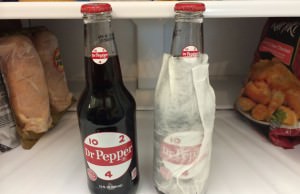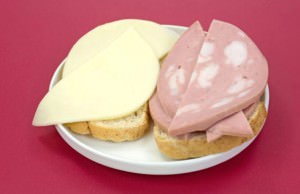21 Life Hacks For Healthier Eating

Dieting and eating right might sound like a chore to just about everyone, but it really doesn’t have to be. Here are 21 small things that you can do every day to improve the way you eat on a daily basis.
1. Research Food Substitutes
Many foods that are considered unhealthy can and should be replaced with healthier substitutes that work just as well in your favorite dishes. That way you don’t have to give up your guilty pleasures altogether, you just need to make them less “guilty.”
For example, you can replace mayonnaise in your sandwiches and salads with mustard. Mayo and fatty sour cream can be replaced by low-fat Greek yoghurt or kefir. If you like your yogurt with granola, which is very sugary, try replacing it with almonds or walnuts, which are also fatty, but in a good way. The same goes for croutons in your salads and soups. Bread crumbs can be replaced with rolled oats and pureed potato works just as well as soup thickener as cream does. Mashed ripe bananas can replace sugar in your baking recipes, while mashed avocado does the same thing, only for butter and oil.
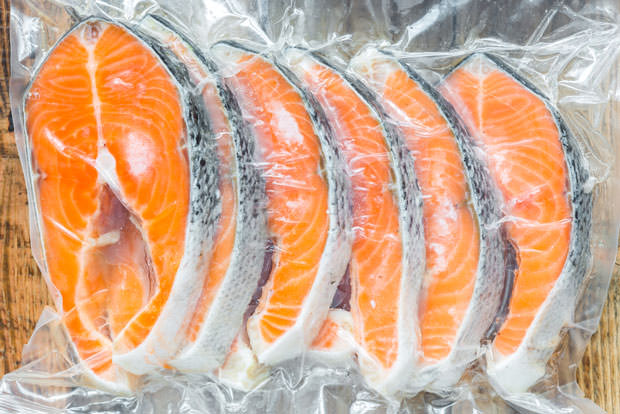
2. Don’t Shun The Frozen Food Isle
Sure, frozen food is not the perfect example of fresh, healthy eating, however, bear in mind that some types of frozen food are actually still packed with all the vital nutrients. Fruit and veggies are nowadays flash-frozen, meaning the process of freezing is so short the food actually gets frozen in a matter of seconds. Most of the nutrients, like vitamins, minerals, fibre, enzymes and others will be preserved.
Frozen food, especially veggies, comes in handy when a certain type of food is not in season, or when you don’t have time to shop for fresh produce. Frozen food doesn’t take up much space in the freezer and it is cooked very quickly, from ten to 45 minutes, depending on the type of food. Of course, don’t forget about frozen fish and even chicken, which can also come in quite useful on certain busy weekdays.
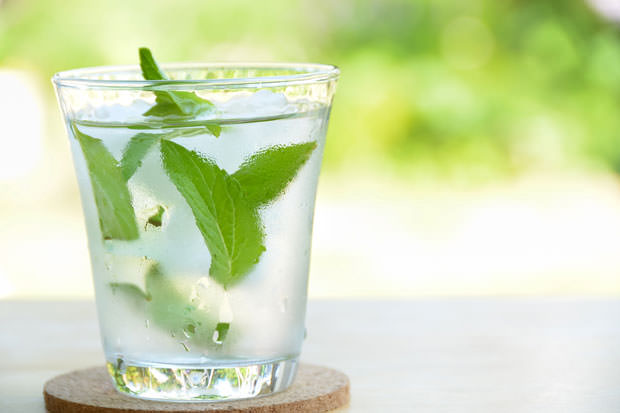
3. Drink Lemon or Mint Water
Staying hydrated is absolutely necessary for healthy living and healthy eating. There have been thousands of studies on the importance of drinking plenty of water and its positive effects on the human health (and also the waistline). Water allows us to digest our food properly and to use all the nutrients that come with it, and according to research, it also helps us lose weight.
The problem is, it can sometimes be hard to drink enough water. Many people just don’t have the habit. If this is the case with you, consider hacking your water-consuming habits by adding a little twist to it. Many people have found that adding squeezed lemon to the water makes it more palatable and inspires them to drink more. The same goes for water with a few twigs of mint in it. You can also add lime or frozen berries, whatever works for you, as long as you get plenty of hydration.
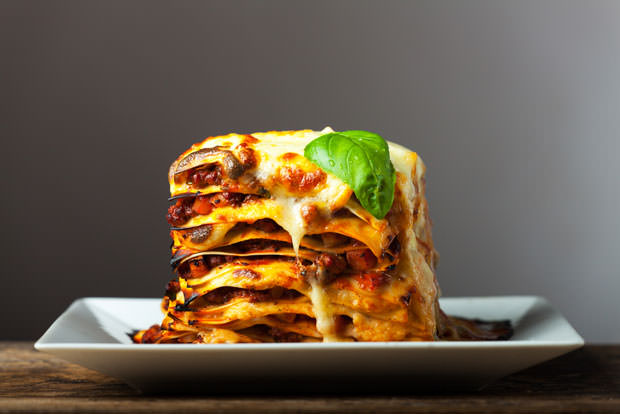
4. Eat More Fat
For ages the main principle of every weight loss diet was cutting down on fat. It may sound incredible that fat is actually good for you and that it might even help you lose weight, but it’s true. The trick is to understand that not all fat is the same and to figure out which kinds of fat are good for you and which still need to be avoided.
The saturated fats, found in meat, cheese, butter, oil and margarine, are “bad” and they still need to be avoided. The unsaturated fats (mono and polyunsaturated) are actually very healthy and you can benefit from eating them on daily basis. These fats are found in nuts (almonds, cashews, walnuts), nut butters, olive oil, fatty fish and avocados. Snacking on these foods promotes weight loss because they keep you fuller for longer and satisfy your craving for fat. Furthermore, they are great for your heart and brain, thanks to vitamins and omega-3 fatty acid.
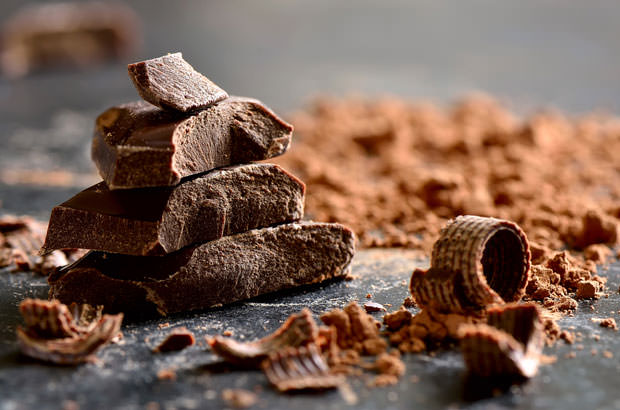
5. Always Have Dark Chocolate Around
Year after year there is more and more proof that chocolate is very beneficial for health. It promotes good cardiovascular health and even has some cosmetic benefits. This is especially true for dark chocolate, which has a higher content of cocoa. Dark chocolate promotes weight loss, improves the mood, fights PMS and depression, prevents diabetes, and it can even help you get a nicer tan. Some people claim that dark chocolate helps them with diarrhea and others say it relieves cough.
When it comes to healthy eating, dark chocolate is essential as it satisfies your cravings for sweet stuff in a way that is actually healthy. Banning all the sweets, candy, cookies and muffins from your home is a great way to resist the sweet tooth, but if you really need your sugar, make sure to have some dark chocolate around. That way you can still enjoy the sweet delight of chocolate while not having to worry about your waistline and your health.

6. Cook Big Soups or Stews
In many cultures soup is the essential part of a meal, especially dinner. Pretty much everyone loves soup, not just when we’re sick. Soup is the ultimate comfort food, it can be very nutritious (depending on how it is prepared and with which ingredients) and it’s fairly easy to make. However, no one really wants to make soup every single day, there just isn’t enough time for it. That’s why it is a good idea to make a huge batch of soup and use it for several days.
Making a big soup or stew that will last for two or three days is a great way to assure you’ll get enough veggies and thus all the essential vitamins, protein and fiber that your body requires. Make the soup on Sunday night and you can enjoy it all the way through Wednesday, if you have a pot that is big enough. Store in the fridge and pour the soup into plastic containers you can take to work with you. Make the soups and stews nice and hearty, with plenty of carrots, potatoes, cabbage, peas, beans, broccoli and cauliflower, and the meat of your choice.
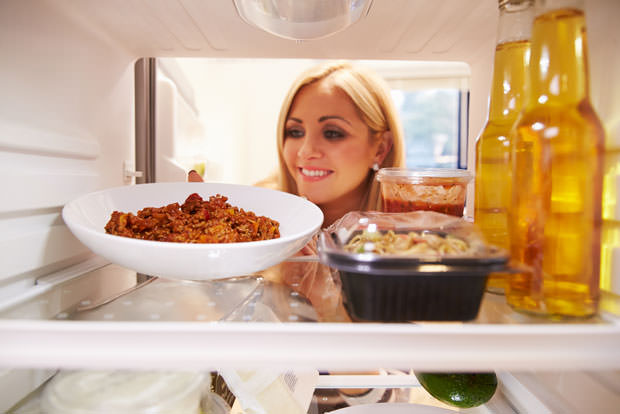
7. Plan For Leftovers
It’s almost impossible to make a meal just the right size – it’s usually either too small, or, which is fortunately more common, it’s too big, so we have plenty of leftovers. This is particularly the case when people throw dinner parties and, of course, on holidays like Thanksgiving and Christmas. We fear that our guests won’t get enough to eat and the thought of coming up as bad hosts terrifies us so we make huge amounts of food, just to be safe.
If this happens to you a lot, you should definitely look into making plans for what to do with your leftovers. Sure, it’s easy to bag them and put them in the fridge for lunches the following days, but sometimes the leftovers are not as yummy as they were when they came out of the oven, or they don’t make such great lunch items. So, when cooking big dinners, think about leftovers too and make meals that will work well over the few following days.

8. Make Mason Jar Salads
Mason jars are all the rage nowadays. These convenient glass recipients with tight lids are usually used to pickle food, and that is great. Pickling is a terrific way to enjoy healthy food (as long as it’s not too salty and doesn’t contain any preservatives). However, there is another great way you can use those mason jars you picked up at the market ages ago. You can make salads!
Mason jar salads are not only crazy convenient – they are also fun and they look nice. Not to mention they are healthy! Here’s an idea – put some vinegar-based dressing on the bottom of the jar. Add some fresh herbs, chopped veggies like lettuce, carrots, beets, cucumbers and broccoli florets, top with some grilled chicken or tuna and you’re done. When you’re ready to eat, just shake the jar so everything mixes well, pour into a salad bowl and voila! Lunch is served.
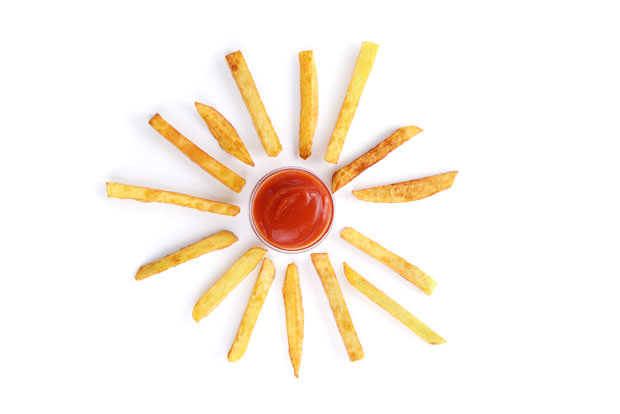
9. Make Your Own Chips
We all love chips and sometimes we simply can’t resist them, especially with drinks or while we’re watching a movie. And yet, we all know that chips are not very good for our health. They are fatty and salty and stick to the teeth. Eating chips on regular basis increases the risk of obesity, high blood pressure, caries and gum disease. Knowing all this, it’s clear that we have to steer clear from chips whenever we can.
However, this doesn’t mean you have to say goodbye to all chips. There are some kinds that are healthier and that allow us to indulge in our favorite snack almost guilt-free, and those are homemade chips. Making your own chips sounds like an arduous task, but the truth is it’s not really that hard. Basically all you need is potatoes, a good knife, a frying pan and some oil. However, if you really want your snack to be healthy, try baking them instead of frying them. Use a baking sheet and olive oil in spray and bake the chips with your favorite seasoning. Oh, and did you know you can make chips from carrots, beets and celeriac?
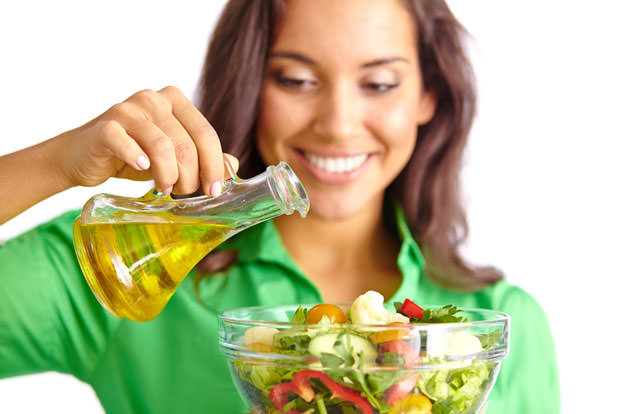
10. Make Healthier Dressings
Post people can’t even imagine a salad without a dressing and that is actually a big problem because, while the salads are good for you thanks to all the veggies in them, the dressing makes them not so healthy, especially if they are loaded with mayo, oil, salt, MSG and various seasonings.
If you can’t imagine your salad with just a little salt and pepper, try replacing certain ingredients in your dressings. For example, instead of mayo, use mustard. Instead of cream, try sesame paste. Use apple cider vinegar or balsamico as a base for the vinaigrette dressing, combined with chopped herbs, seeds and nuts. Extra virgin olive oil and cold pressed vegetable oils are incredibly healthy and they are also delicious in salads. Don’t use store-bought dressings, since they are usually packed with additives and MSG. Home-made dressings are very easy and fun to make, not to mention they are cheaper and way, way healthier.
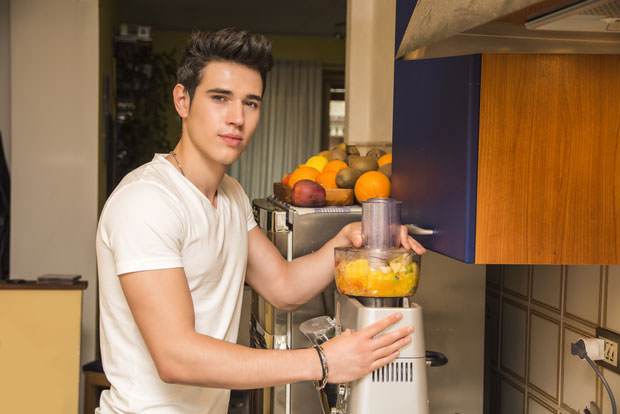
11. Blend Your Fruit
Not a big fan of fruit? A lot of people aren’t, but that doesn’t mean it’s okay not to eat any. Fruit is absolutely essential for a proper diet, as it contains nutrients, vitamins, minerals and other important stuff that we need on a daily basis. People who try to eat healthy often make a conscious decision that they are going to start eating fruit every day and buy large amounts of different kinds of fruit, which unfortunately often goes bad and ends up in trash.
If you are one of those people, here’s an idea – try blending your fruit. Almost all fruit is blendable, and those kinds that are not can usually be squeezed into juice. Blend two or three different kinds of fruit, add some carrots and beets, some low-fat milk or yogurt and you got yourself a super-nutritious meal that can replace breakfast or even lunch (if you add some nuts and grains) or be used as a midday snack. You can also make your shakes and smoothies in the evening and store them in the fridge in a to-go cup so you don’t have to do it in the morning.

12. Make Healthier Seasonings
As we mentioned earlier, eating spicy foods is often considered unhealthy because many store-bought seasonings, toppings and dressings contain high amounts of MSG and other undesired additives. If you can’t stand bland food and simply have to add something for an extra kick, consider switching to more beneficial seasoning options.
One great way to season your food in a healthy way and to benefit from the nutrients in the seasoning is to use sesame. Sesame is very healthy as it is rich in minerals and vitamins and certain phytonutrients that promote good cardiovascular and neurological health. You can simply sprinkle lightly roasted sesame seeds on your stir-fries, baked veggies, sandwiches and soups, or you can ground the seeds and mix them with coarse sea salt. Cumin is another great seasoning, and so are pepper flakes, chopped mint, basil, rosemary, black or white pepper, ginger, coriander, turmeric, paprika and many others. Browse the ethnic aisle in your local supermarket to get some ideas for delicious and healthy seasonings.

13. Frequent Salad Bars
If you are a person who likes to eat healthy and takes care of their weight, salad bars are already your best buddies. There aren’t many things that are more friendly to a healthy diet than salad bars in restaurants, bars and shops. With salad bars, eating your lunch out no longer means hot dogs, fries and pizza – it means fresh veggies and lightly cooked lean meat that is both filling and healthy. And also cheap.
However, there is another great way you can use your favorite salad bar. You can shop for your veggies there! If you don’t have time to wash, peel, dice and slice your vegetables, shopping at the salad bar is ideal for you. You can pick up some diced onions and carrots, zucchini, cucumbers and what not. This works great for those who always seem to buy too much produce that soon goes bad and has to be dumped. It’s also great for when you need just a little bit of a certain produce, say, a quarter cup of chickpeas.
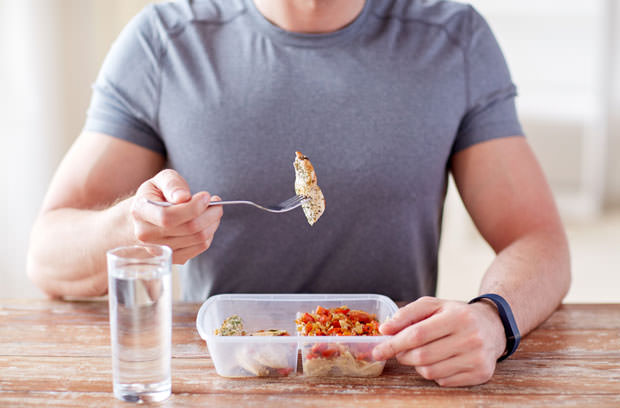
14. Use Portion-Control Bags, Ziplocs and Containers
Storage bags and containers are your friends when it comes to eating healthy. There are hundreds of ways you can use them and if you’re smart about it they can make your life so much easier. For example, Ziploc bags, which come in various sizes, can be used for anything from freezing tiny portions of fruit for cakes and cocktails, to storing large amounts of nuts, seeds, grains and cereal. They are leak-proof so you can use them even for messier foods. Of course, for soups and stews you will want to use a container, not a bag. Choose containers with air-tight lids so you can carry your lunch in your bag or purse without having to worry about messy accidents.
Because they keep the food fresh, containers and Ziploc bags are ideal for cooking ahead and planning meals for several days. They are great for kids’ lunches and they are essential for picnics. Did you know that if you put fresh veggies in a Ziploc bag and squeeze all the air out before closing it, the veggies will stay fresh much longer than in a regular bag in the fridge or in the veggie bin?

15. Buy Seasonal Foods
Most dieticians and nutrition experts agree that it is best to eat produce that is in season. This is because the travel from the farm to your table is much shorter and the produce is bound to be fresher. Of course, you can indulge in some grapes in the early spring or pumpkin in the middle of summer, but the general rule of thumb is to always go for fruits and veggies that are in season.
Another reason for this is that produce that is in season is way cheaper than fruits and vegetables that are normally eaten in a different time of the year. And if you are trying to eat healthy, the economic aspect is definitely important. You can buy your produce in larger amounts at the farmer’s market, where the food is generally more genuine but also more expensive than in supermarkets.
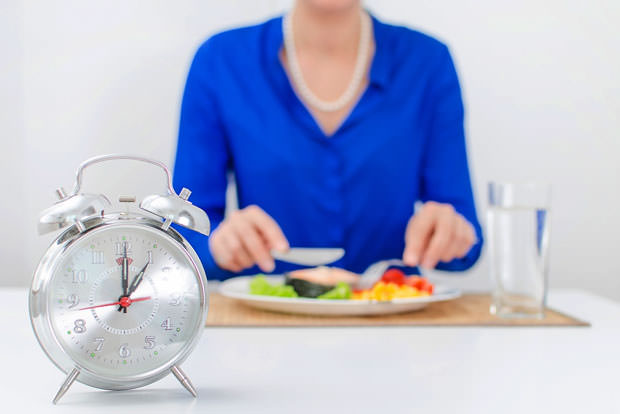
16. Respect Eating Schedules
It has been proven on several occasions that eating a certain amount of calories throughout the day or in one or two bigger meals are two very different things. A person who eats, say, 2,000 calories over the course of the day will be healthier, feel more full and consequently be thinner than a person who gobbles down the same exact amount of calories for lunch or dinner. Schedule is everything and it is important not just for healthy eating but also for losing weight.
Most experts agree that having three main meals per day – breakfast, lunch and dinner – and also two or three smaller meals – snacks – is the best way to eat. It is also important to respect the schedule and to try to eat at approximately the same time each day. Not allowing yourself to get really hungry is the best way to avoid binge-eating and unhealthy snacks as well.
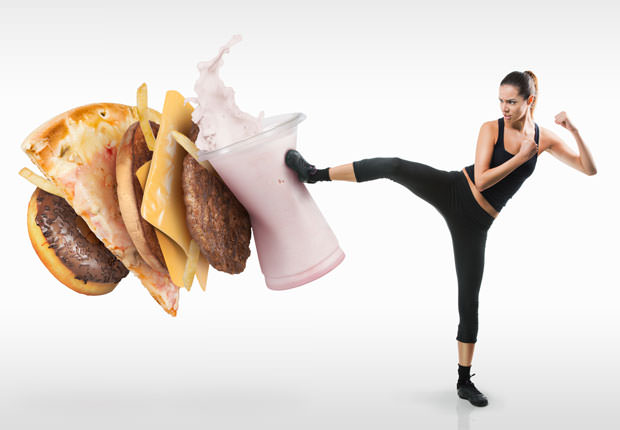
17. Say No To Junk Food
We all know that junk food is not good for us. It’s unhealthy, prevents us from losing weight and it just feels wrong. However, even the most conscientious eaters sometimes can’t resist the urge to eat some delicious junk food. Sometimes we indulge in junk because we’re sad or upset, and sometimes simply because we’re too lazy to fix ourselves a nice healthy meal. And, of course, sometimes we just can’t resist.
The best way (sometimes, the only way) to resist the call of the junk is to not have any around. You can’t eat an entire carton or ice cream if you don’t have any in your freezer. Simple as that. Of course, you can always make a trip to the grocery store, but by the time you put your shoes on you’ll probably decide it’s just not worth it. Plus, with no junk food around, you probably won’t be tempted in the first place.
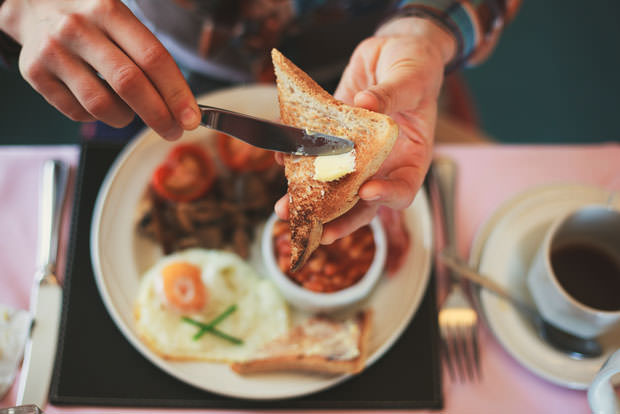
18. Never, Ever Skip Breakfast
You know how they say that breakfast is the most important meal of the day? Well, they ain’t lying. It has been proven that eating a nice, hearty but healthy breakfast instead of just grabbing some coffee to go is the best way to ward off unhealthy food cravings during the day and to make better eating choices.
Breakfast doesn’t have to be a big deal. It can be a bowl of cereal, a fruit or two, maybe an omelette. If you’re not a morning person and tend to be late all the time, you may not be in the mood or have the time to make breakfast. But remember that cereals don’t really require any time to prepare and that fruit can always be eaten on the go.
Some people don’t feel like eating anything at all in the morning. However, this too can be fixed. Try preparing something you really like, even if it’s not a traditional breakfast food. Try doping this for several days, until your mind and the body get accustomed to the idea of eating first thing in the morning.
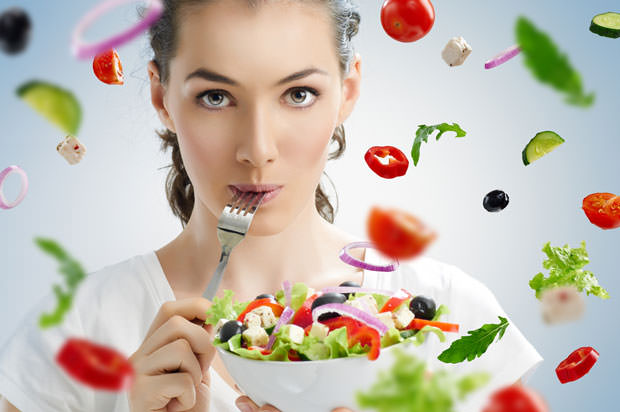
19. Stock Up On Healthy Foods
It’s so much easier to prepare healthy meals when we have appropriate foods and ingredients at hand. If you don’t have any ideas on what to make for dinner, simply open your fridge, see what’s there and combine. With plenty of food in the fridge and pantry, you won’t have an excuse of having to go to the supermarket to buy ingredients for a delicious, healthy meal. You will simply have no excuse and no other alternative than to eat healthy.
Remember that different foods are stored in different ways. Veggies and some fruits are stored in the fridge, in the special bin designed to keep them fresh. Dairy products, meat and fish, of course, absolutely need to be refrigerated. Nuts, seeds and spices belong in the pantry, and so do most types of flour. Learn about which foods require which kind of storage, so they keep fresh for longer. A well-organized kitchen full of healthy stuff will inspire you to eat well and to eat healthy.
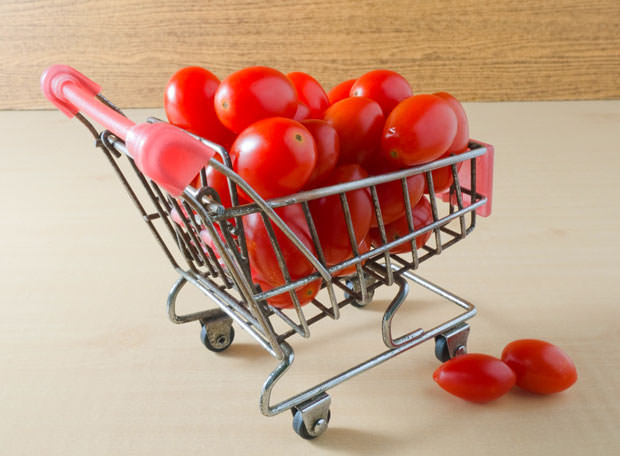
20. Buy Pre-Chopped or Mini Veggies
Many people simply don’t have the time required to cook and eat properly and they need every little time-saving trick they can think of. Buying pre-chopped and washed vegetables and fruits, or miniature varieties of veggies, is one way to save time while cooking.
Nowadays you can buy bagged, chopped and often washed and ready-to-eat vegetables like carrots, lettuce, cabbage, beets, celery, radishes and others, in almost every grocery store and supermarket. You can even buy diced onions, if you want to avoid the tears. You can use them as healthy, convenient snacks or use them to prepare your meals, which saves time you’d spend chopping and washing your veggies. Mini-veggies, such as baby carrots, are ideal as snacks and also make a quick and easy addition to your salad. Did you know there are baby cauliflowers and broccoli too? Well, they’re technically small florets of those veggies, but they are still super-convenient and make a terrific addition to your salad, soup or stir-fry.
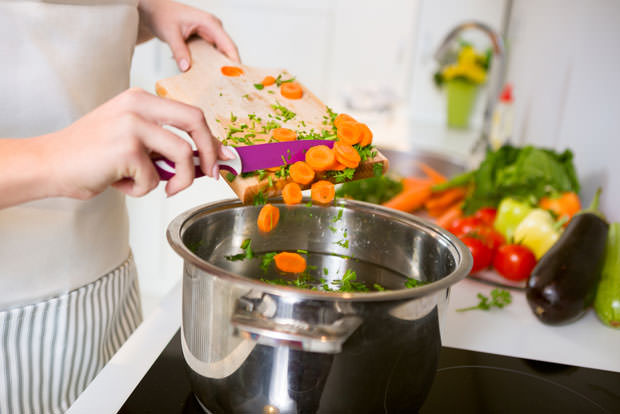
21. Cook In Advance
The proactive approach to cooking and eating in general can give amazing results when it comes to reducing stress about healthy eating. Not to mention it also saves time! It may sound like too much work to prepare meals for four or five days, but you can actually do all of the work in just one evening.
The key is to plan carefully. See what ingredients you have at hand and shop for more before going back home from work in case something is missing. Make one big soup or stew that can be used for two dinners. The same goes for casseroles and similar dishes. Grilled or roasted meat can be used for several days if kept in fridge. As for salads, wash and slice all the veggies and divide them into portions which you will place in small airtight containers and the dressing will be added just before serving.


